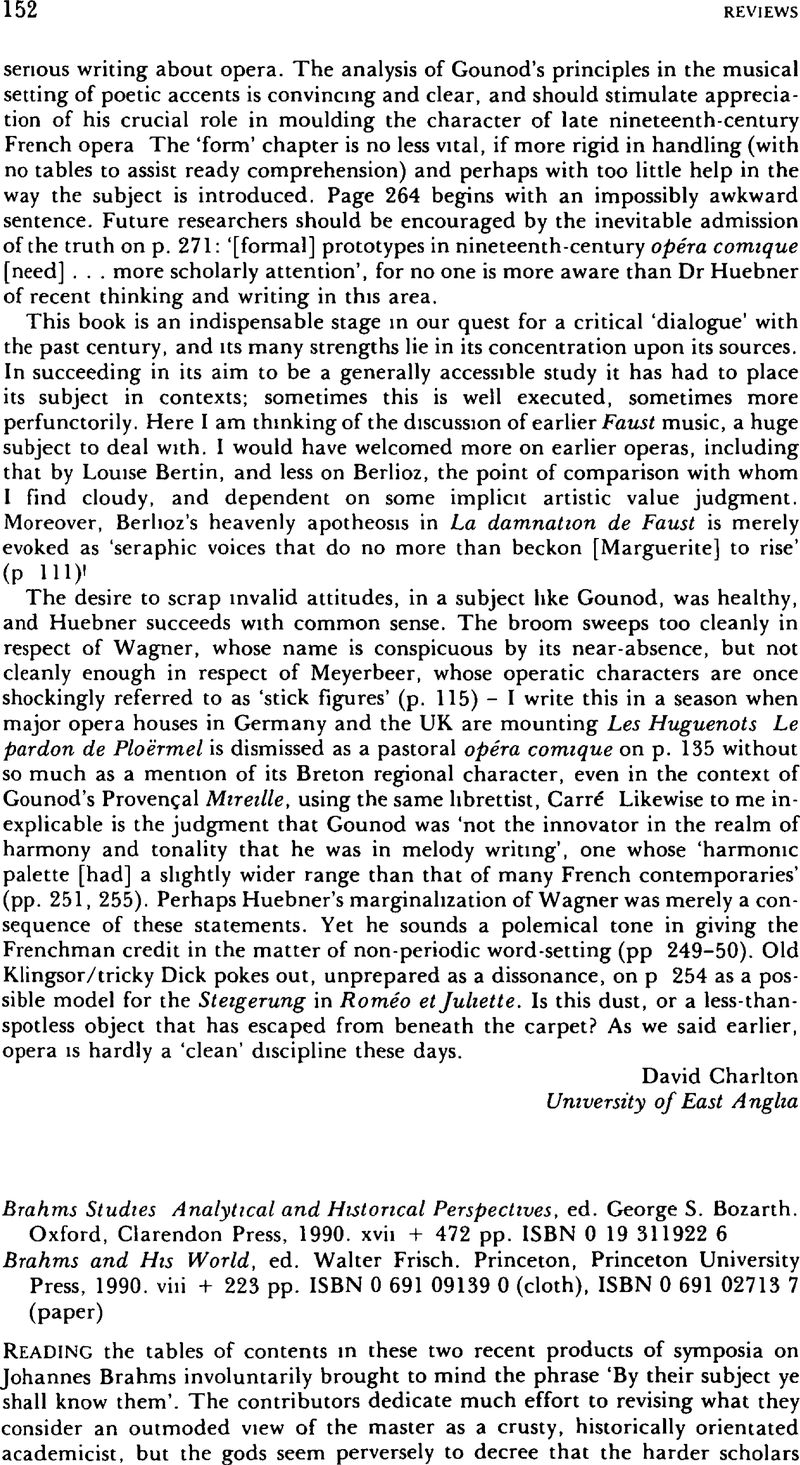No CrossRef data available.
Published online by Cambridge University Press: 01 January 2020

1 I borrow this phrase from Lawrence Kramer, ‘Carnaval, Cross-Dressing, and Women in the Mirror’, Abstracts of Papers Read at the Joint Meetings of the American Musicological Society (Oakland, 1990), 8–9 (p 8)Google Scholar
2 Even Schoenberg himself uses the term ‘Schumann-Brahmsian-Academic-Classicist School’ in ‘New Music, Outmoded Music, Style and Idea’, Style and Idea (New York, 1950), 37–51 (p 37)Google Scholar
3 See Kerman, Joseph, ‘How We Got into Analysis, and How to Get Out’, Critical Inquiry, 7 (1980), 311–31Google Scholar
4 Bozarth takes his technique from Anthony Newcomb's ‘Once More “Between Absolute and Program Music” Schumann's Second Symphony’, 19th Century Music, 7 (1983–4), 233–50Google Scholar
5 A more concrete approach to Viennese intellectual history has long been available in books like William J McGrath's Dionysian Art and Populist Politics in Austria (New Haven and London, 1974) or Carl E Schorske's Fin-de-siècle Vienna Politics and Culture (New York, 1980)Google Scholar
6 To see an instance where psycho-history actually makes a difference, read Maynard Solomon's ‘Charles Ives Some Questions of Veracity’, Journal of the American Musicological Society, 40 (1987), 443–70Google Scholar
7 We learn more about this relationship from Linda Roesner's' Brahms's Editions of Schumann' in the StudiesGoogle Scholar